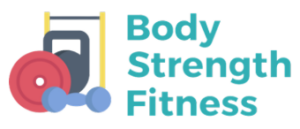Embarking on a fitness journey often leads to the pivotal question: How often should I hit the gym? The frequency of your gym visits can significantly impact your fitness success, shaping not only your physical prowess but also your mental resilience. This article isn’t just a guide; it’s your fitness ally, designed to help you decode the ideal gym attendance schedule tailored to your personal goals and lifestyle.
Assessing Personal Goals
Understanding your unique fitness goals is paramount. Whether aiming for weight loss, muscle gain, or overall health improvement, your objectives directly influence your gym routine. For muscle building, frequent weight training sessions are essential, targeting different muscle groups for balanced growth.
In contrast, general physical condition might focus on a balanced mix of cardio, strength, and flexibility exercises, ensuring a comprehensive approach to well-being. Aligning your gym frequency with these objectives ensures a targeted and effective workout regime, making each session purposeful and directly linked to your desired outcomes.
Establishing a Baseline

Before diving into a fitness routine, it’s crucial to understand your baseline fitness level. This understanding not only prevents injury but ensures that your fitness plan is realistic and sustainable. Consulting a physical condition professional can provide invaluable insights, especially if you’re uncertain about your starting point. They can assess your current fitness status and craft a program that aligns with your capabilities and goals, ensuring a safe and effective progression in your fitness journey.
Understanding Workout Types
Recognizing the difference between various workout types – strength training, cardio, and flexibility workouts – is crucial. Each type serves unique purposes and demands different recovery times. Strength training, for example, necessitates muscle recovery time, typically requiring a day off between sessions to allow for muscle repair and growth.
In contrast, cardio and flexibility workouts can be performed more frequently, contributing to cardiovascular health and enhancing range of motion. Balancing these workout types according to your specific goals and recovery needs is key to crafting an effective and diverse fitness routine.
Weekly Workouts for Beginners
For beginners, gradually immersing into the fitness world is crucial. Starting with 2-3 gym sessions per week can be a sensible approach, allowing your body to adapt to the new routine without causing undue stress or potential for injury.
At this stage, consistency trumps intensity, paving the way for a sustainable and enjoyable fitness journey. This approach not only fosters physical adaptation but also helps in establishing a routine, creating a strong foundation for future physical condition endeavors.
Intermediate Gym-Goers

For those with some gym experience and accustomed to regular exercise, increasing your routine to 3-5 sessions per week may be beneficial. This frequency allows for a more intensive focus on different muscle groups and workout types, promoting balanced development and preventing muscle imbalances.
It’s essential to remember that balancing different types of workouts (strength, cardio, flexibility) not only prevents monotony but also reduces the risk of injury, ensuring a holistic approach to fitness.
Advanced Fitness Enthusiasts
For advanced fitness enthusiasts with ambitious goals and a high tolerance for intensive workouts, aiming for 5-7 gym sessions per week may be the most beneficial. This level of dedication requires not just physical endurance but also a meticulous focus on proper nutrition, strategic workout planning, and ample recovery.
It’s paramount to maintain a holistic approach, ensuring that your regimen includes a balanced mix of cardiovascular, strength, flexibility, and restorative practices. Mindful listening to your body is critical at this stage to prevent burnout and overtraining, ensuring that your physical condition regimen remains beneficial, challenging, and sustainable in the long term. Regular evaluation of your goals and adaptation of your routine can lead to remarkable progress.
The Role of Rest Days
Rest days are a crucial component of any fitness regimen, not merely a pause in your routine. These days are essential for muscle repair and growth, significantly reducing the risk of injury and fatigue. They are also vital for mental rejuvenation, helping maintain motivation and focus. Depending on your fitness level and the intensity of your workouts, incorporating 1-2 rest days per week is generally recommended.
This inclusion ensures that your body has ample opportunity to recover and rejuvenate, making your workout sessions more effective and sustainable. Remember, rest days are as crucial as workout days in building strength, endurance, and achieving long-term fitness goals.
These days are used for refill of energy, more about this you can learn at https://rythmoftheworld.com/.
Adaptation and Progression

Your body is remarkably adaptable, adjusting to the levels of physical demand placed upon it. Embracing the concept of ‘progressive overload’ is crucial for continual improvement and avoiding fitness plateaus. This involves gradually increasing the intensity, frequency, or duration of your workouts to keep challenging your body and achieving consistent results.
It’s also essential to diversify your workout routines, incorporating new exercises and techniques to engage different muscle groups and enhance overall fitness. Adapting your gym frequency and workout complexity based on your body’s responses ensures continual progression, keeps your workouts dynamic and interesting, and prevents the dreaded physical condition plateaus.
Regularly reassessing your goals and adjusting your approach will keep your fitness journey on a trajectory of constant improvement.
Quality vs. Quantity
The adage that more isn’t always better holds true in the realm of fitness. Spending extended hours in the gym doesn’t necessarily equate to better results. Instead, the quality and intensity of your workouts are what truly count.
Focusing on efficient, well-structured workouts can actually reduce the need for excessive gym time while still delivering impactful results. Making each session count, focusing on form, intensity, and proper technique, is far more beneficial than merely counting the number of sessions.
Consistency is Key

In the journey of fitness, consistency is the linchpin of success. Regular gym attendance, complemented by a balanced diet and adequate rest, forms the bedrock of long-term fitness achievements. Discovering a routine that is both enjoyable and sustainable, one that seamlessly integrates into your lifestyle and keeps you consistently motivated, is crucial. This consistency not only fosters physical improvements but also cultivates a mindset geared towards ongoing health and well-being.
Conclusion
In the symphony of fitness, there’s no one-size-fits-all. It’s about harmonizing your gym frequency with your personal goals, lifestyle, and the whispers of your body. Remember, fitness is a personal journey, rich with individual variances and nuances. Embrace the journey, adjust your sails as you progress, and most importantly, enjoy every step towards your pinnacle of physical condition success.



